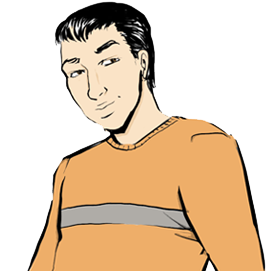 During last week's lecture, Dr. Matanle introduced the concept of Intention vs. Accident as it applies to creativity. He further applied that concept to the idea of Art vs. Craft. He described the "Craftsman" as the one who knows in advance what the final outcome of a creative work will be, while the "artist" has no knowledge of how the final product will turn out.
During last week's lecture, Dr. Matanle introduced the concept of Intention vs. Accident as it applies to creativity. He further applied that concept to the idea of Art vs. Craft. He described the "Craftsman" as the one who knows in advance what the final outcome of a creative work will be, while the "artist" has no knowledge of how the final product will turn out.The idea that there are two "camps" of the creative mind has never occurred to me, and I really don't agree with the strict separation of art and craft. Personally, I very much like to know the general idea of where I'm going with my design and writing--to picture in my mind's eye what I want to produce and the direction I want to take the work. That being said, I also understand that my work will almost never look exactly like it does in my mind. This leaves things open for that "happy accident" to occur, but still keeps that loose "bounding box" around what I'm creating. Finding this balance is necessary to be a working design professional. You must be able to allow your creativity to flow, but also know where you've got to end up. Without that structure, you can very well end up with a beautiful piece of work, but one that doesn't contain the message you initially intended to send.
In the article that Dr. Matanle read from, British philosopher R.G. Collingwood argued that "we pay craftsmen to paint houses or repair clocks because of the dependability of learned techniques. These people know what they are doing. But in the sense of using skill to produce a preconceived result, creative artists strictly speaking never know what they are doing."
But aren't design skills (including software skills, elements of style, principles of art and design, etc.) a learned technique? Is a graphic designer, therefore, any less of an artist because they've been trained to use the Adobe Creative Suite or a graphic tablet? Does that diminish the writing of one who is trained in proper grammar and the guidelines Associated Press Style? I think not.
I feel that each of us has a little bit of the artist and craftsmen (or craftswoman, as the case may be) within us and that finding the right balance for the right project is where the true challenge begins.













